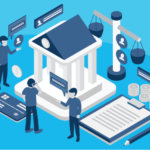Secure Vehicle Loan Software – How to Prevent Scams – Vehicle loans are increasingly being processed through online platforms or applications in today’s advanced digital lending landscape. This convenience also enables threats of cybercrime and loan fraud as groups use new technologies. Secure Vehicle Loan Software – How to End Scams is now top-of-mind for lenders, dealers, and borrowers.
Whether you are a lender working to protect your systems, a borrower working to protect against recognized theft, or a dealer working to protect your transactions, knowing how to secure vehicle loan software is important.

Importance of Vehicle Loan Software Security
Vehicle loan software may help with tasks that include credit checks and offering contracts or e-signatures. If this software a user does not cleaned and secured by a user, one can have –
Data breaches – Exposing sensitive customer details like Social Sec numbers, bank info, & personal identification.
Financial fraud – Scammers may assume, or create synthetic identities, will pose as a legal borrower to constantly fraudulently secure loans.
Damaged reputation – One incident of fraud or theft of information can destroy the reputation of a lender or dealer.
Security is more than compliance, security is trust. Secure Software to prevent scams ensures all parties in the loan process are protected.
Vehicle Loan Fraud Types
Understanding how scams work helps you build bigger defenses. Here are some of the known fraudulent practices found in the vehicle lending sector –
Synthetic Identity Fraud – Fraudsters use real and fake data to create a new identity, and apply for a vehicle loan under the misstatement of the new identity.
Loan Stacking – Fraudsters will apply for a loan(s) from many lenders, before draining the loan that was issued before it is pulled onto the credit report.
Fake Employment or Income Confirmation – Fraudsters will submit forged documentation to satisfy the needed timelines in the loan approval process.
Phishing and Social Engineering – A fraudster can use social engineering to trick customers or staff into relaying account login information. The fraudster will then use this information to access vehicle loan systems.
Dealer Collusion Fraud – There are situations in which dealerships will cooperate with fraudsters by inflating prices on vehicles, altering purchase documents to approve a bigger loan.
Secure Vehicle Loan Technology Features
To defend against vehicle-related scams, the technology utilized in vehicle financing must be brutally secure. Here are the main features to look for –
End-to-End Encryption
Both data at rest and in motion must be, and should be, encrypted with AES-256 or similar. In the event of a data breach, no matter how it is accessed or transportation method, the data must never be completely recoverable by unofficial parties.
Multi-Factor Authentication (MFA)
Using a multi-faceted method of verification for accessing the software is a necessity, employing methods like passwords, OTPs (One-time passwords), and biometrics. MFA greatly reduces the risk of unauthorized access.
Role-based access control (RBAC)
Not everyone should have access to everything. RBAC enables access based on user role (like lender, dealer, underwriter). This helps stem insider threats and accidental exposure of information.
Real-time fraud detection
AI and machine learning algorithms can recognize anything suspicious, like mismatched information, batch applications for loans, or behavioral patterns that are inconsistent with typical borrowers.
Secure APIs and Integrations
Loan software connects with banks, credit bureaus, and e-signature services, and these APIs need to be protected and tested periodically; once again, anything outside the software opens firms to breaches.
Audit logs and monitoring
There should be detailed logs of system access and activity, and every audit log should give evidence of activities for possible review. Audit logs allow for identifying suspicious behaviors.
Best practices to prevent scams
In addition to software features, operational practices are also essential, so here is how lenders and users alike can stay safe and protected.
Lenders and Dealer Roles
- Train your employees constantly about cybersecurity threats like phishing and identity theft.
- Vet customers blindly throughout your layered identity verification processes.
- Perform security audits and penetration testing constantly to find and fix exploits.
- Use e-contracts and e-signatures with authentication to further limit the chances of altering documents.
- Vet dealerships and third parties are usually within the vehicle loan origination process.
For Borrowers
- When applying for a loan, use the lender’s actual website or app and avoid third-party platforms.
- Be careful with personal information to avoid sensitive information being shared on unsecured networks.
- Regularly check credit reports for unauthorized loan inquiries and/or accounts.
- Confirm your lender is real by checking charges and reviews online from trusted sources before applying.
AI’s Role in Scam Prevention
Various vehicle loan software products are starting to include AI in fraud monitoring. AI can confirm the thousands of data points that are reviewed and flag the higher-risk applications in real time. The possible roles of AI include –
- Identifying patterns of known fraud strategies
- Behavioral biometrics to identify a legitimate user; and
- Adaptive authentication based on a risk profile.
AI continues to learn from earlier fraud trials, always trying to outsmart the next scam.
What is Happening to Vehicle Loan Software that is Making It More Secure
There are likely to be more included and more used trends to aid in providing secure vehicle financing.
- Blockchain technology for secure loan records
- Decentralized identity management
- Zero-trust architecture, where no device or user is trusted
- Biometric authentication, ideally with advanced biological measures
- With digital lending changing, security will remain a priority for trust and safety for all parties involved.
FAQs
What is secure vehicle loan software?
Secure vehicle loan software is a digital tool that provides enhanced security features, for example, encryption, multi-factor authentication, fraud detection, and complies with data security and privacy laws, for managing auto loans. The purpose of secure vehicle loan software is to streamline loan processing while preventing the fraud and scams we are seeing today.
How can I tell if a vehicle loan application is a scam?
Red flags are promise of funds without requiring repayment, ask for upfront payment, feeling pressure to take a loan that day, not asking you about your credit history, and having subpar websites or poorly designed forms and applications. Always vet “lenders”, check their license, and do not provide personal data on a site you don’t know.
What can lenders do to prevent fraud in vehicle financing?
Lenders should adopt secure loan software that has fraud detection features, perform stringent identity verification, audit their alliances with dealerships, and systematically have employees trained in best practices for cybersecurity. Ongoing multiple systems to review and keep secure loans protected is the ultimate goal.
Can AI help in spotting vehicle loan fraud?
Yes! AI is a powerful aid for detecting fraud and can help spot patterns, behaviors, and anomalies in real time. AI can also detect fake documents, suspicious processes, and even predict high-risk applications, making it somewhat of a crime prevention tool in the evolving world of vehicle loan scams.








